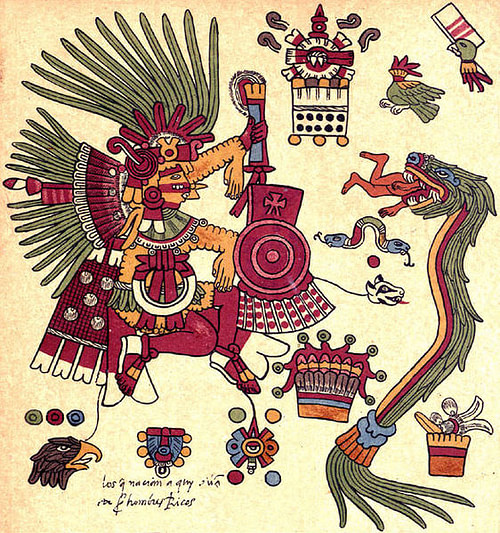
Xipe Totec (pron. Xi-pe To-tec) or 'Flayed One' in Nahuatl, was a major god in ancient Mesoamerican culture and particularly important for the Toltecs and Aztecs. He was considered the god of spring, the patron god of seeds and planting and the patron of metal workers (especially goldsmiths) and gemstone workers. He is equivalent to the Red Tezcatlipoca, patron of Cuauhtli (eagle), the unfavourable 15th Aztec day-name and he was represented by the date 1 Océlotl.
Early Origins
Xipe Totec perhaps originated with the Olmec culture and developed from their ancient God VI. Another possible origin is from the Yope civilization in the southern highlands of Guerrero. The first representations of the god in art, however, date to the Post-classical period (9th to 12th century CE) in the Mazapan culture at Texcoco. The god was a major Aztec deity and was also worshipped by the Tlaxcaltecans, Zapotecs, Mixtecs, Tarascan and Huastecs. The late Post-classical Maya also adopted Xipe Totec and representations of the god survive at Oxkintok, Chichen Itza and Mayapan.
In Mesoamerican mythology Xipe Totec was the son of the primordial androgynous god Ometeotl and, specifically in Aztec mythology, he was the brother of those other three major gods Tezcatlipoca, Huizilopochtli and Quetzalcoatl. Sometimes credited with being a creator god along with his brothers, Xipe Totec was also closely associated with death, which resulted in him being considered the source of diseases amongst mankind. However, the god also received many offerings from worshippers calling for him to cure illnesses, especially eye ailments.
The Tlacaxipehualiztli
Every spring in the third month of the solar year the festival of Tlacaxipehualiztli (a.k.a. Coailhuitl or the Snake Festival) was held in honour of Xipe Totec and human sacrifices were made to appease the god and ensure a good harvest that year. The sacrificial victims, usually war captives, were then skinned in symbolic imitation of the regeneration of plants and seeds which shed their husks and thereby provide new seeds.
The festival was preceded by an even stranger practice of an impersonator dressing as Xipe Totec for 40 days before the big day, splendidly decked out in bright red spoonbill feathers and sparkling golden jewellery. Then, on the day of the festival at dawn, the impersonator was sacrificed - often actually regarded as an honour in Mesoamerican religion - and skinned along with impersonators of another eight gods including Quetzalcóatl. The skins of all these victims were dyed yellow and called teocuitlaquemitl or golden robes and were either worn by priests who performed ritual dances in them in the ceremony known as Tozoztontl held the following month or worn by young men for 20 days who then went around begging until the skins rotted away and the remains were then buried in the god's temple. The significance of these impersonations and sacrifices was once again one of regeneration related to agriculture.
The Tlahuahuanaliztli
One of the highlights of the Tlacaxipehualiztli festival was the Tlahuahuanaliztli gladiatorial contests. These involved captives who had displayed most courage being placed on a circular stone platform (temalacatl), bound up and made to fight elite Eagle and Jaguar warriors or knights. However, there was no chance of survival as the knights were armed with the vicious macuauhuitl, a hardwood sword edged with razor-sharp obsidian, whilst the captive had a sword edged with feathers so, aside from tickling to death his opponents, the contest was a foregone conclusion and merely a more elaborate form of sacrifice than meted out to the other victims of the festival.
Representations In Art
In art Xipe Totec was a popular subject both in statues and masks. He is most often represented rather grotesquely with a bloated face (sometimes striped), sunken eyes and double lips. He can cast a ghoulish figure wearing the skin of one of his sacrificial victims which is elaborately tied with a string at the back, shows the incision where the victim's heart was removed and with even the flayed hands hanging from the god's wrists.





